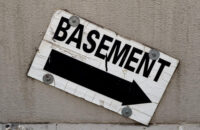Considerations for Choosing the Right Sump Pump
When it comes to water damage mitigation in basements and crawl spaces, one of the best tools you can use is the sump pump. The right one can help you maintain the integrity of your property and its foundations while also eliminating the need for water damage restoration or mold removal.
If water starts seeping into your basement or crawl space from the ground up or if there is a flood in your basement due to rain or storms, the sump pump will automatically switch on and start pumping the accumulated water into a drain.
However, there is a condition. The sump pump you use is supposed to be high quality, the right size, and pump. It should also have an appropriate power supply to continue drainage without damaging your electrical or plumbing system.
This article will go over some essential considerations you will need to make when choosing a sump pump based on what water damage restoration staff looks for.
How Sump Pumps Help With Water Damage Mitigation?
Sump pumps are usually installed in your basement and have a container dug into the ground. This container usually has a float valve or another mechanism, depending on the model, to indicate that the container is full. When the valve turns up, it automatically turns the sump pump on, which starts pushing water out.
Some models work with sensors or weight plates as well, while others are completely submersible. The goal with these pumps is to:
- Prevent basement flooding
- Prevent water damage from stagnant water
- Prevent mold growth
- Help with water damage restoration
- Help with mold removal
You should consider hiring a sump pump that works on the battery should the power go out. Loss of power is often associated with flooding in basements – especially in older houses.
Choosing the Right Sump Pump For Water Damage Mitigation
Choosing By Type
One of the first considerations you need to make is regarding the pump design. There are two types of sump pumps:
Submersible
These pumps are dug into the ground and create a ‘lid’ on top of a sump pit. The pump inside the pit needs to be submerged to turn on.
Pedestal
There is a motor installed above the basement floor with a hose in a shallower sump pit. Again, if the bit fills beyond a certain point, the pump turns on.
Combination of Sump Pump Systems
These pumps combine submerged and pedestal pumps. One is plugged in the basement, while a secondary, battery-operated pump is placed above it. This is a more reliable system, albeit more expensive.
Water-Powered Sump Pumps
These systems do not use any type of electricity. Instead, use the pressure in your municipality’s water supply system. They have a float valve attached to a pipe that rises with the water level. When fully risen, the flowing water inside the pipe creates negative pressure, creating suction.
This pressure pulls all the excess water out of the pit and discharges it outdoors.
Horsepower
The horsepower of your sump pump will dictate the suction pressure it creates. ¼ to 1/3 HP pumps should be enough to help with water damage mitigation and restoration.
Head Pressure
It is a measure of how high your sump pump can push the water before losing its kinetic energy. It also depends on the horsepower and hose size. Bigger hoses mean more pressure is needed. Ideally, you should be looking for AT LEAST 10-12 feet of head pressure. More will be better.
Manual vs. Automatic
Manual sump pumps aren’t usually a very good idea as they require someone to turn it on, By the time you may notice water in your basement, water damage may become quite extensive, and you may need the help of water damage restorations and mold removal companies – or even biohazard removal companies if you are later than 24-36 hours!
Consider buying automatic sump pumps that turn on whenever there is a rise in water level beyond a certain point. You need to ensure that the pump is in working condition at all times, though.
Voltage
Usually, sump pumps require a 110-volt circuit. However, these are residential pumps that have ¼ to 1/3 HP. These may help with minor flooding, but for major flooding and water damage restoration purposes, you will need a commercial pump.
These often require a 220-volt, dedicated circuit.
It is important to note that sump pumps are a water damage mitigation tool – not for water damage restoration. If there is water in your basement in places where your sump pump cannot reach, you may need to call a home or commercial restoration company.
911 Restoration of Minneapolis has IICRC certified experts to help you diagnose any issues with your sump pump and help you with water damage mitigation or restoration and mold removal if needed. Give us a call any time, and we’ll be right over, offering free visual inspections for property owners across the state!


 When it comes to water damage mitigation in basements and crawl spaces, one of the best tools you can use is the sump pump. The right one can help you maintain the integrity of your property and its foundations while also eliminating the need for
When it comes to water damage mitigation in basements and crawl spaces, one of the best tools you can use is the sump pump. The right one can help you maintain the integrity of your property and its foundations while also eliminating the need for 